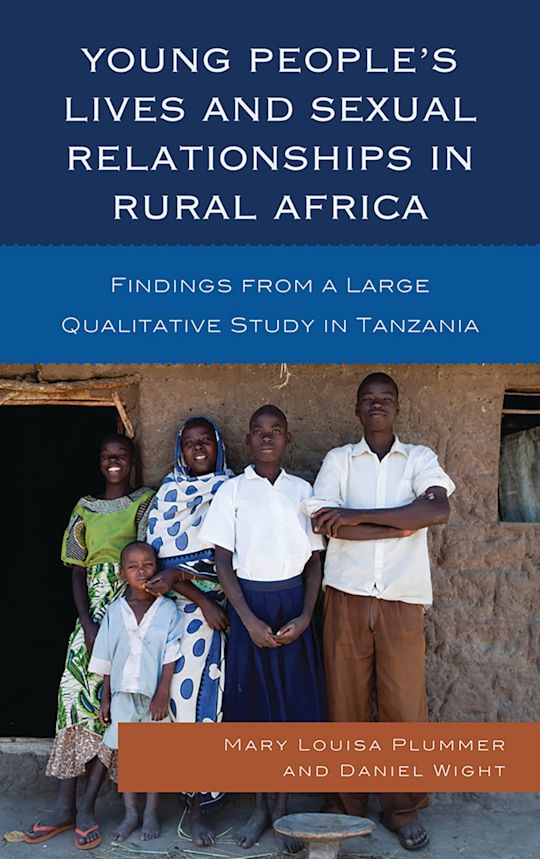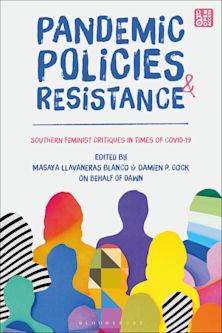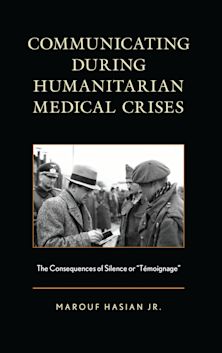- Home
- ACADEMIC
- International Development
- Health and Development
- Young People's Lives and Sexual Relationships in Rural Africa
Young People's Lives and Sexual Relationships in Rural Africa
Findings from a Large Qualitative Study in Tanzania
Young People's Lives and Sexual Relationships in Rural Africa
Findings from a Large Qualitative Study in Tanzania
You must sign in to add this item to your wishlist. Please sign in or create an account
Description
New infections with HIV remain an urgent problem among young people in Africa, but many young Africans pursue sexual relationships with little thought about the epidemic. This book examines young people's sexual relationships in a region typical of rural sub-Saharan Africa and investigates why the risk of HIV infection generally was not a salient concern for them. It is based on an extraordinarily large and representative qualitative study that was affiliated with an adolescent sexual health intervention trial and included three person-years of participant observation conducted by young East Africans in nine Tanzanian villages.
The book describes typical patterns of sexual relationship formation in adolescence and early adult life, the variety of young people's relationships and practices, and the contradictory social ideals and expectations that led premarital and extramarital relationships to be concealed. Young men's main motivations for sex were pleasure and masculine identity, while young women's was to receive money or materials to meet their basic needs, such as soap or a daytime meal. By their late teens most young people had experienced one-time sexual encounters, open-ended opportunistic relationships, and "main" sometimes semi-public partnerships. Relationships could involve desire, possessiveness, and affection, but romantic idealization of a partner was rare. Many young people expected their partners to be monogamous, but themselves had had concurrent relationships by age 20. The practice of hiding premarital sexual relationships from adults often also concealed them from other sexual partners, which helped maintain concurrency and inhibited realistic risk perception. Understanding of the biology of HIV/AIDS was very limited. Condoms were rarely used because they were associated with reduced pleasure, infection and promiscuity. Sexually transmitted infections were common, but several factors hindered young people from seeking biomedical treatment for them. Many instead relied on tradit
Table of Contents
Chapter 2: Research Methods
Chapter 3: Village Life
Chapter 4: Children's Relationships with Parents, Peers and Teachers
Chapter 5: Contradictory Sexual Norms and Expectations
Case Study Series 1: "We'll Have Sex Again When the Opportunity Arises": Typical Young People’s Lives and Premarital Sexual Relationships
Chapter 6: Unmarried Young People's Sexual Relationships
Chapter 7: Sexual Negotiation, Exchange, and Coercion
Chapter 8: Sexual Practices
Case Study Series 2: "He told me, 'Just come and live at my home'": Typical Young People's Experience of Marriage and Divorce
Chapter 9: Married Young People's Sexual Relationships
Chapter 10: Contraception, Abortion, and Fertility
Chapter 11: HIV/AIDS and Other Sexually Transmitted Infections
Case Study Series 3: "The Fever Went Away But Always Returned": HIV-Positive Young People's Lives and Sexual Relationships
Chapter 12: Barriers and Facilitators of Sexual Risk Reduction
Product details
| Published | Aug 16 2011 |
|---|---|
| Format | Ebook (Epub & Mobi) |
| Edition | 1st |
| Extent | 464 |
| ISBN | 9780739135808 |
| Imprint | Lexington Books |
| Publisher | Bloomsbury Publishing |
About the contributors
Reviews
-
This study conducted during 1999-2002 is concentrated on the young people in rural Mwanza Region, northern Tanzania, on the southern shore of Lake Victoria. The area is occupied mostly by Sukuma and smaller ethnic groups, all of whom speak Swahili. Only 7 percent of Tanzania's school-age population was enrolled in secondary education... The vast majority of young women was sexually active and in relations--fleeting as they may have been--with men who supplied gifts or direct payment for sex. Only 12 percent of 15-19-year-old women reported ever having used contraceptive methods, mostly condoms. Plummer and Wight (both, UK Medical Research Council) suggest that (illegal) abortion was practiced widely. Counseling and behavior modification were most active in the realm of sexually transmitted infections. Many villagers in this study believed "real" AIDS was sexually transmitted, but also believed that a separate AIDS-mimicking illness was caused by witchcraft. Restrictive norms, rather than the threat of HIV infection, constrained sexual activity. The inclusion of detailed case studies makes this study personal and supplies depth. There is a Swahili and Sukuma glossary. Summing Up: Recommended. Graduate students, faculty, professionals.
Choice Reviews
-
This excellent volume offers a remarkably thorough analysis of young people's lives and sexual relationships in Tanzania. The detailed qualitative analysis the authors provide shows the value of good ethnographic fieldwork for research in this sensitive and private sphere. This important book deserves to be widely read particularly by all those concerned about the well-being of young people.
Janet Seeley, University of East Anglia
-
The book offers a rich description of the lives of young people in a high-HIV setting in rural Africa. It offers a glimpse into the lived experience of people in that setting, which should be of value to researchers trying to make sense of complex processes, as well as to policymakers when assessing the effectiveness of particular policies. They need all the help they can obtain: 30 years into the epidemic, we continue to fall short both in our research and in our policy initiatives in effectively combating the epidemic.
Population Studies: A Journal of Demography
-
Young People’s Lives and Sexual Relationships in Rural Africa: Findings from a Large Qualitative Study in Tanzania is well organized, well written, and draws upon a unique dataset from rural Africa. The authors accomplish what they set out to achieve: the text provides a rich and detailed account of the sexual lives of young people in Tanzania, discusses the implications of the behaviors for HIV-prevention programs, and thoughtfully and comprehensively explores the challenges and strengths of conducting this type of qualitative data collection in rural African communities.
Studies in Family Planning


































